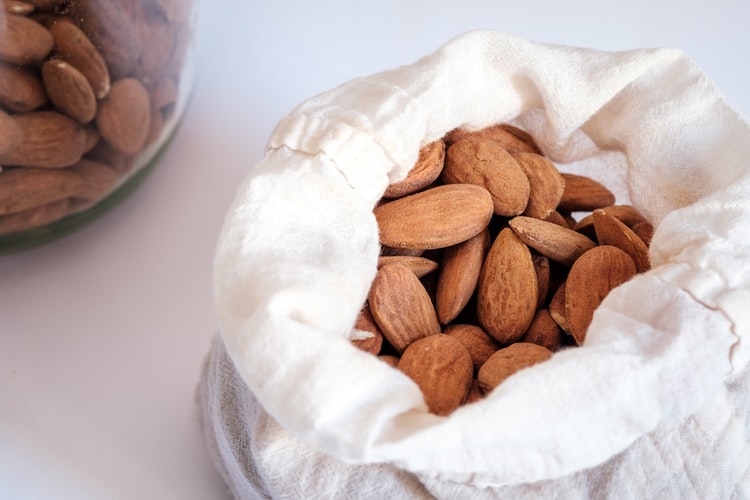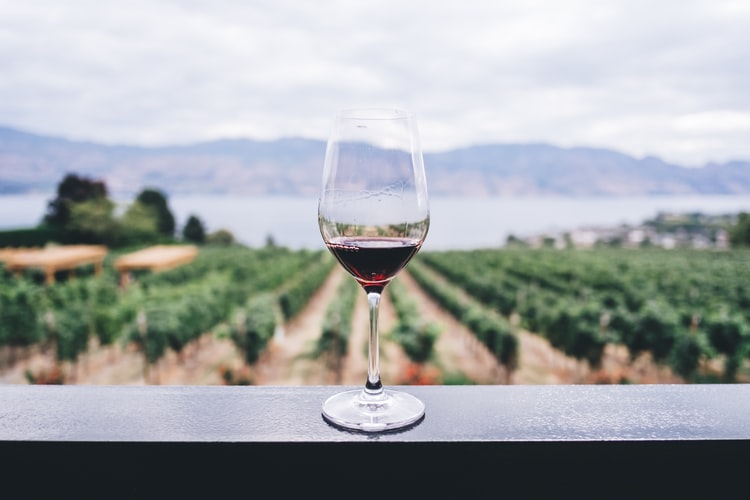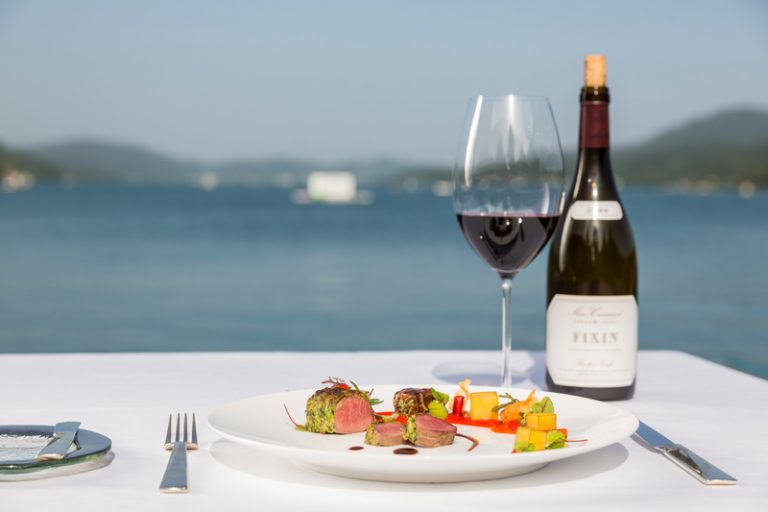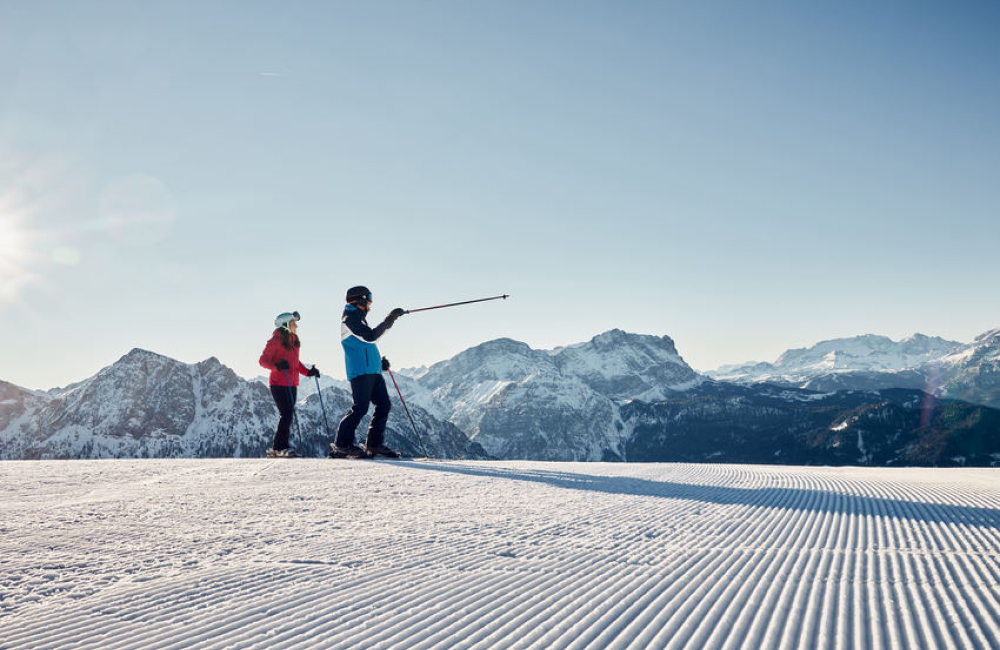The perfect companion: smells incredibly good, is versatile and takes you on an exciting journey. I am talking about wine, of course. Hardly any other drink is as multi-faceted, as full of tradition and as popular as wine. In order for you to enjoy this pleasure trip to the fullest, you can find 5 wine basics for beginners here:

1) Alcoholic strength
As a rule of thumb, wine has an alcohol strength of 9-14%. According to EU law, a wine must have an alcohol strength of 8.5% in order to be called wine. Wine is generally classified in three levels
- light = less than 10%
- medium = around 12%
- heavy = more than 14%
The higher the alcohol percentage, the stronger the wine’s taste – but more about this later. The alcohol content of the wine can even be seen in the glass. If you swivel the wine in the glass and watch how it runs down the inside of the glass, you can see the so-called wine legs. The slower the wine flows down, the higher the alcohol content.
2) Optics
However, the wine legs are not the only thing that can be read just by looking at the wine in the glass. If we take a classic red wine, the color of the wine alone provides us with countless information:
- Red wine
The brighter a red wine of a certain type is, the older it is, because the coloring substances settle on the bottom. Young red wines are bright red and the older the wine gets, the more brown tones mix in. Otherwise, the rule of thumb is: the darker a wine, the warmer the growing area and the more colorful, the more full-bodied and tannic (what this means exactly follows at point 4). However, there can also be differences due to the grape variety. A Cabernet Sauvignon gives off more color due to its thick skin, whereas a Pinot Noir is generally lighter – regardless of the growing region.
- White wine
The reverse rule of thumb applies to white wine: the darker a white wine, the older and more mature it is. If the white wine shimmers greenish, this indicates a relatively high acidity. Dark yellow to golden colors indicate a heavier and more mature white wine and usually have higher alcohol content. Also, in this case, certain grape varieties can be an exception, such as a Chardonnay, which is generally more yellowish. In addition, whites that have been matured in barriques (stored in oak barrels) are always more yellowish and have more intense colors than conventionally stored wines.

3) Smell
Okay, this is a little tough on the rookies. Have you ever heard an expert blurt out hundreds of adjectives just by smelling them? I always thought it was just bragging at first. But with a little practice and some help, you can actually recognize one or the other scent. And if not, then just guessing and imagining the many aromas is incredibly fun. The most important grape varieties and their aromas can be found in the info box below.


4) Taste
Now for the best part: tasting the wine. Take a normal sip, let it rest in the palate and move it back and forth a little with your tongue. How does it feel? Velvety, smooth or rather “scratchy”? Full-bodied or thin? Soft or angular? Lively or flat? Observe how the wine behaves in the finish: is it long-lasting and the taste remains on the palate for a long time and can still be felt through the oesophagus-stomach or is it gone immediately? All these are indicators of the quality and history of the wine.
5) What wine can tell us…
The history of wine comes to life when you watch it from beginning to end. Especially interesting are wines that change from the nose to the tip of the tongue, through the palate and on to the finish, thus telling the many facets of the wine. When you consider that many, many hard-working hands take decisive steps for the quality already in the vineyard, many sun-rain storm hours affect each individual grape, mature over many years until it is in the bottle and the craft of the individual winemakers makes each wine unique, each sip takes you on a very special journey.

The right wine accompaniment to a meal
Not every wine goes well with every dish. In principle, heavy wines should not be drunk with fatty dishes, but rather acidic wines. These help to balance the fat content and thus create a well-balanced aroma profile, e.g. a Blaufränkisch for Sunday roasts. A strong, fruity and spicy wine such as Zweigelt or Cabernet is best suited for grilling. Fish requires a discreetly aromatic wine, for example, a Veltliner, Chardonnay or Pinot Blanc. In general, it can be said that wine should never whitewash the food unless of course, the wine should be the main focus.


Have fun on your next aroma journey through the boundless world of wine! If you would like to experience this journey literally, the Falkensteiner Balance Resort Stegersbach in the middle of the vineyards in Southern Burgenland awaits you with a special class experience.
Red Wines
Barbera: plum, violet blossom, sour cherry, tar
Blue Zweigelt: Plum, cherry
Cabernet Franc: red berries, violets, pepper, smoke, liquorice, truffle, green pepper
Cabernet Sauvignon: red berries, cassis, plum, green pepper, blueberry, pepper, liquorice, leather, vanilla, chocolate, cinnamon, tobacco
Merlot: cherry, plum, cassis, blueberry, caramel, leather, mushrooms
Nebbiolo: violet, cherry, plum, liquorice, truffle, smoke, tar
Sangiovese: violet, blackberry, leather, vanilla, cherry, plum, elder
Pinot Noir: red berries, cassis, cherry, violet, spices, smoke, leather
Syrah: cassis, raspberry, blackberry, violet, cedar, pepper, leather, liquorice, tar
White wines
Chardonnay: exotic fruits, apple, pear, peach, nut, vanilla, butter, wood
Pinot gris: apple, pear, honey, pineapple, grapefruit, raisins, almonds, smoke
Grüner Veltliner: apple, citrus fruit, pepper
Müller-Thurgau: apple, lemon
Riesling: apple, grapefruit, peach, quince, herbs, honey, petroleum
Sauvignon Blanc: cassis, gooseberry, lemon, flint
Pinot Blanc: apple, pear, quince, apricot, babae, lemon, grapefruit, banana, nut
Source: www.ps-wein.de






